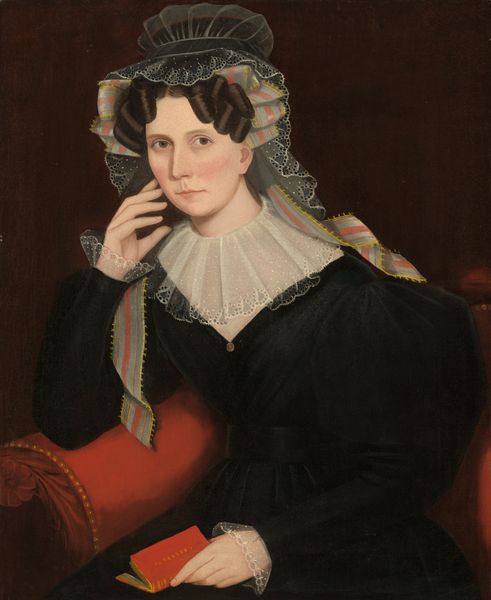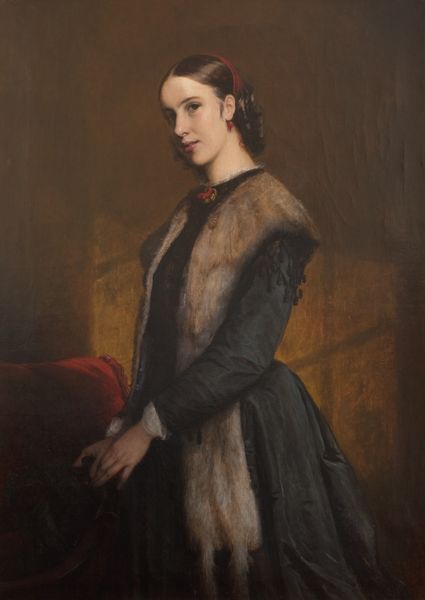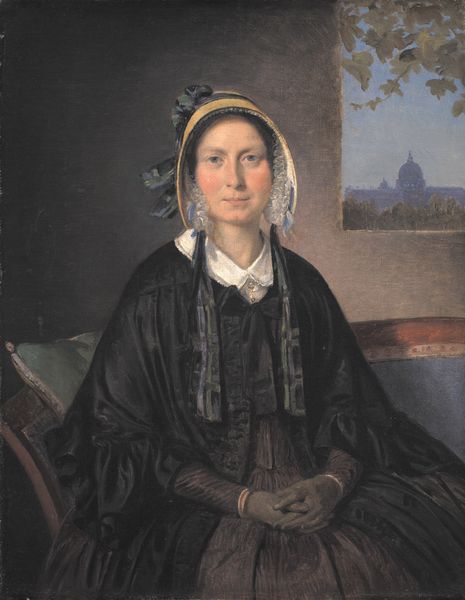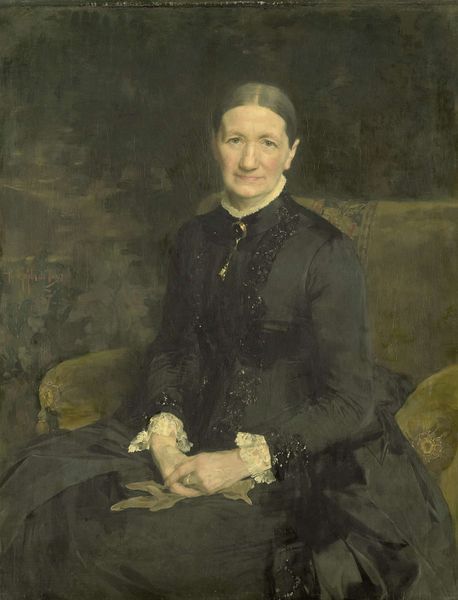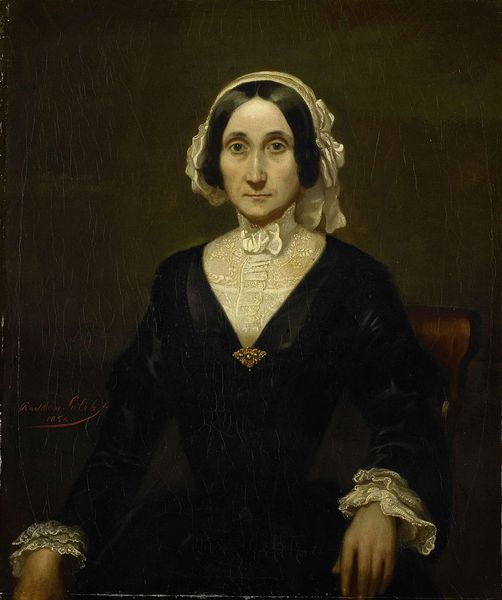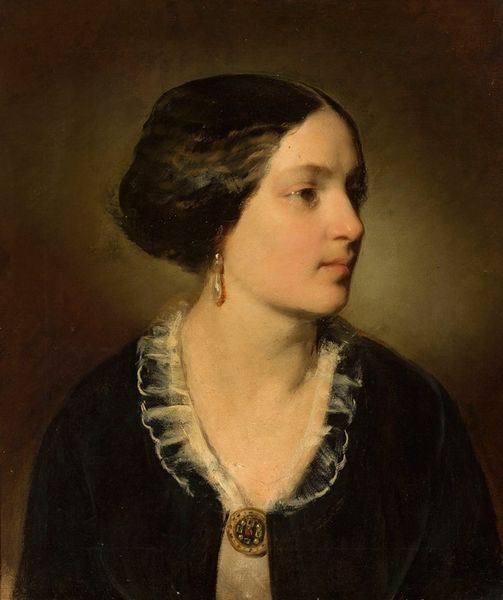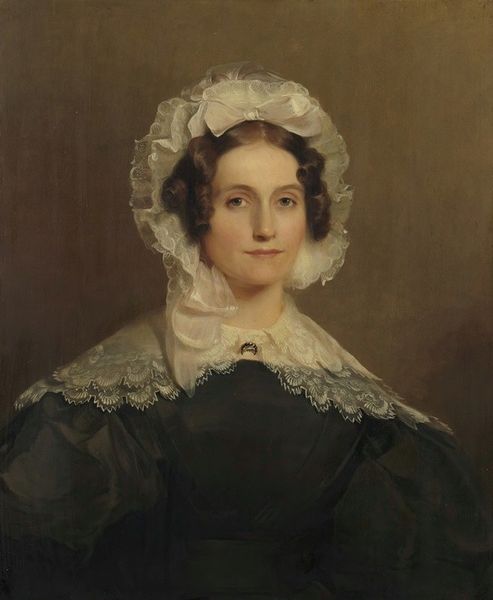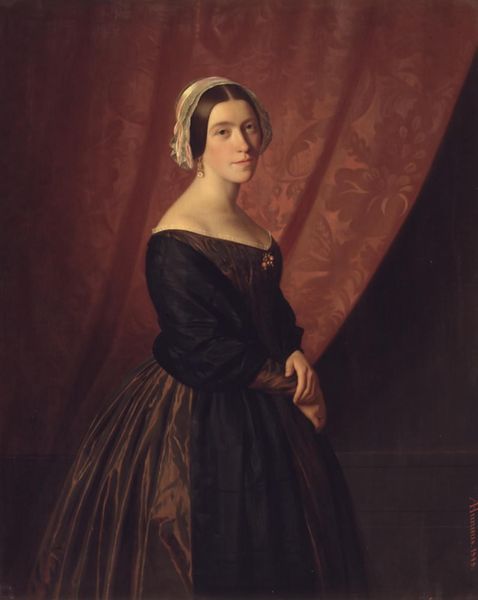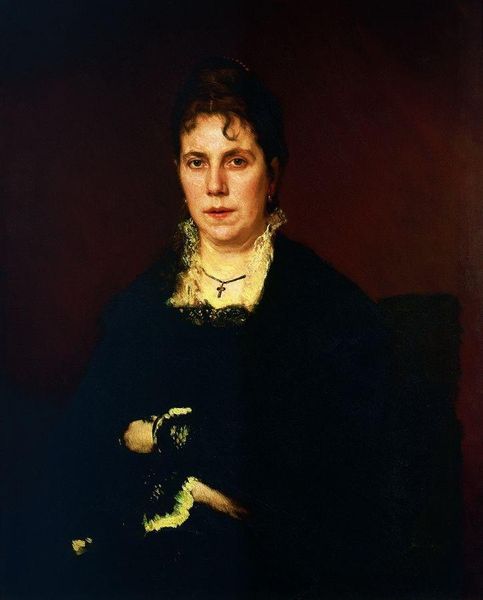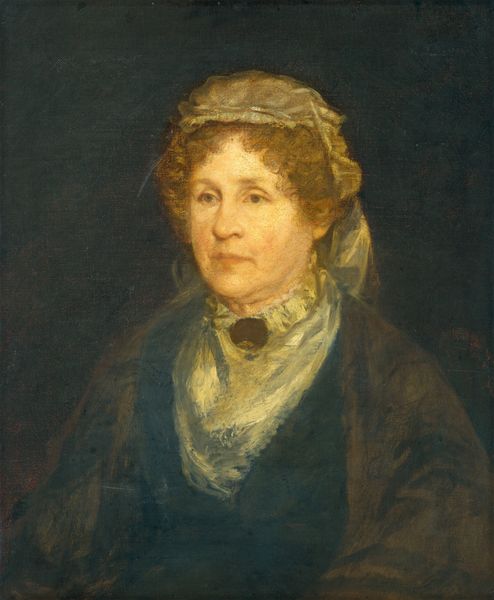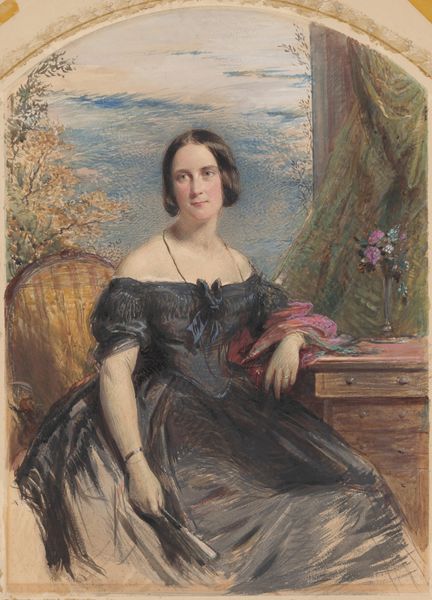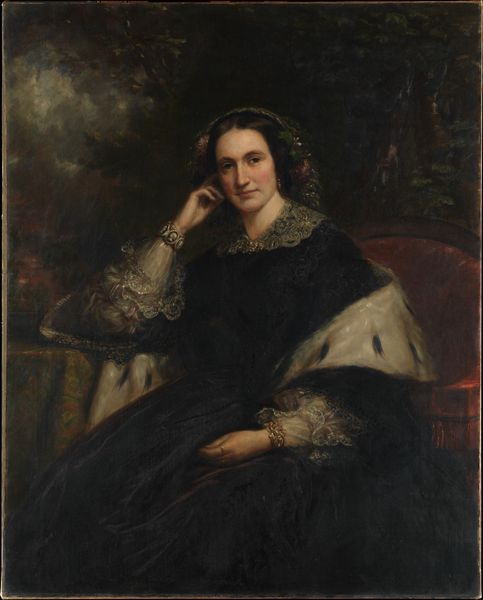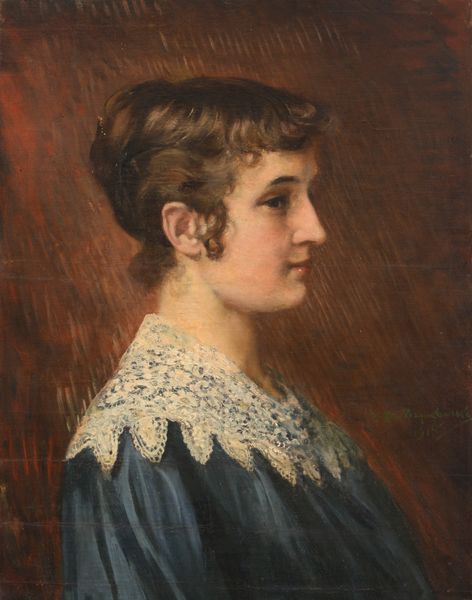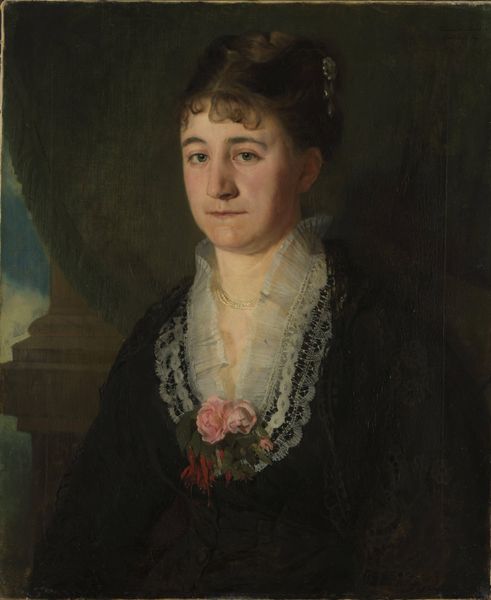
painting
#
portrait
#
painting
#
romanticism
#
academic-art
#
realism
Dimensions: overall: 76.2 x 63.5 cm (30 x 25 in.)
Copyright: National Gallery of Art: CC0 1.0
Curator: Let's consider Alvan Clark’s 1845 portrait of "Lovice Corbett Whittemore (Mrs. Thomas Whittemore)." At first glance, what stands out to you? Editor: It's the intense materiality of the black fabric against the soft skin of the sitter. You can almost feel the weight and texture of that dress. I'm wondering about the sourcing and labor involved in such an opulent material for that time. Curator: Absolutely. Beyond the tangible elements, there's a compelling narrative to be found when we delve into Lovice's life as Mrs. Thomas Whittemore and the societal expectations placed on women during that era. How does her subtle expression speak to those pressures? Editor: You raise an interesting point. While the dress hints at a certain social status achieved through Thomas’s labor, her subdued gaze suggests the constraints on her own agency and the restricted choices available to women in 1845. How much did gender expectations determine what garments like this *meant* for the subject? Curator: Indeed. It highlights how clothes can both empower and imprison, representing a woman's identity within the confines of patriarchal society. We can infer that her sartorial choices reflect social conventions designed to promote women's roles within very narrow spaces, so how can clothing be interpreted in today's cultural and political context? Editor: Let's not forget how fabric dyes were achieved! As a social indicator of status and material comfort, it speaks to global material supply chains and the artist's access to particular painting materials and the patrons that are likely supporting him and, indirectly, the sitter here. It underscores what it means to *possess* material status markers in this historical context. Curator: Considering all the interwoven layers we discussed here, the portrait isn't just a visual representation but a tangible historical artifact with much to reveal to a viewer. Editor: Agreed. What appears as a traditional portrait unravels into complex material, political, and gendered discussions. It really leaves one thinking about labor and how that impacts every life, even those who appear the most comfortably distant from it.
Comments
No comments
Be the first to comment and join the conversation on the ultimate creative platform.
